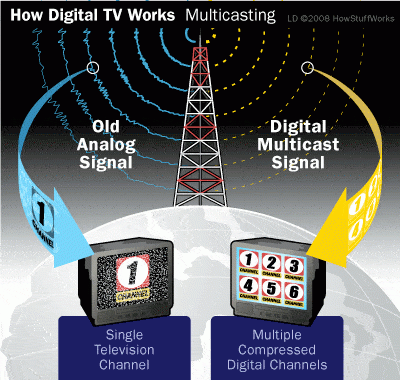
Following Zimbabwe’s failure to meet the three deadlines set by International Telecommunications Union (ITU) to migrate from analogue to digital broadcasting, 263Chat has decided to research more into the technical differences between analogue and modern digital broadcasting techniques.
First of all, it is important to note that Analogue TV broadcasting is now considered obsolete and is being super-seeded by Digital TV broadcasting techniques marked by high quality content through modern transmission media such as fibre optic cables and digital satellite.
“Zimbabwe is required to migrate from the current analogue broadcasting technology to the digital broadcasting technology by 17 June 2015, in accordance with the migration deadline set by the International Telecommunications Union” wrote the Broadcasting Authority of Zimbabwe on their official website: www.baz.co.zw

What is analogue television broadcasting?. Analogue television broadcasting is the use of the analogue technology in the transmission and reception of television broadcasting services. The analogue technology has been in existence since the use of technology in different everyday applications, including in telecommunication and broadcasting.
The analogue technology essentially converts information (sound and pictures in the case of broadcasting) into electrical signals which are then used by the system to convey the information, say, through modulation of frequencies for the actual transmission.
What is digital television broadcasting?. Digital television broadcasting is the use of the digital technology in the transmission and reception of broadcasting services. The term ‘digital’ implies using digits or numbers in the representation of the information (again sound and pictures in broadcasting).
The two technologies (analogue and digital) are essentially the same in terms of information acquisition in that both convert the acquired information (sound, pictures) into electrical signals.
However, instead of using the electrical signal directly, the digital technology takes representative samples of the original signal and converts these samples to digits, into what becomes a digital representation of the information. This digital information is then used in the application at hand.
Digital television broadcasting technologies have given birth to new exciting broadcasters such as Kwese’ TV, a flagship of the Econet Media Group. The rise of Kwese’ and its widespread popularity can only be credited to the high quality content they deliver far much ahead of their state broadcaster counterpart ZBC.
Digital television broadcasting has given the MultiChoice Africa Group a household name with their DSTv content delivered through high quality digital satellite television signals.





